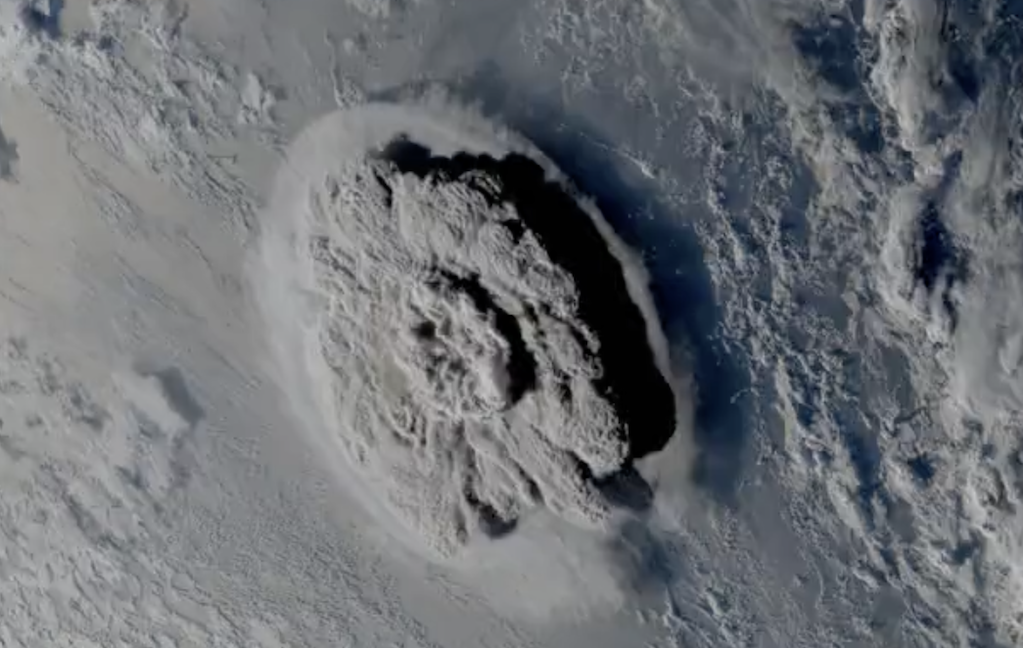
The story of an underwater volcano’s historic eruption keeps getting wilder.
In January 2022, the Hunga Tonga-Hunga Ha‘apai blast in the South Pacific sent pressure waves around the planet, astonishing scientists. Months later, researchers learned the explosion blew a whopping 58,000 swimming pools worth of water into the atmosphere — an unprecedented amount. Now, volcanologists determined the explosion’s plume of ash and water reached over 35 miles high. That’s the highest ever observed.
“It’s an extraordinary result as we have never seen a cloud of any type this tall before,” Simon Proud, a research fellow at the National Centre for Earth Observation in the UK and the study’s lead author, said in a statement. The research was published this week in the journal Science.
The powerful eruption easily blew through the lower part of the atmosphere, where we live and experience weather, called the troposphere (it reaches around 7.5 miles high). Then, it even pushed through the lofty stratosphere — a largely cloudless and weather-less realm — which reaches some 31 miles high. The plume ultimately entered the mesosphere, where most meteors burn up. As Proud tweeted, that’s “more than half way to space!”
“It’s an extraordinary result.”
To figure out the extraordinary height of Hunga Tonga-Hunga Ha‘apai’s plume, the researchers used images gathered from three different weather satellites operated by three different nations: The U.S.’s GOES-17, Japan’s Himawari-8, and South Korea’s GK-2A. The pictures, sent back every 10 minutes, allowed the team to see the great blast from a variety of angles, and ultimately deduce the volcanic cloud’s height.
These advanced satellites, however, didn’t exist during previous monstrous eruptions, like Mount Pinatubo’s violent blast in 1991. With decades-old observational abilities, scientist found that plume reached 25 miles high, but it wasn’t even the most powerful eruption of the 20th century. So other explosions may have reached the mesosphere, too. “Our research shows that previous eruptions, like Pinatubo in 1991, that weren’t seen by these advanced eyes in space probably went higher than we previously thought: Scientists couldn’t see the volcano from multiple angles and didn’t have frequent enough images,” Proud noted online.
Where did Hunga Tonga-Hunga Ha‘apai get all its volcanic power? It’s a submarine volcano, meaning the basin where the eruption occurs is underwater. It lies nearly 500 feet under the surface, giving the eruption vast amounts of water to violently blow into the sky. While an impressive show of nature, this eruption won’t have a long-lived climate impact. Water vapor is indeed a potent greenhouse gas that traps heat, but this temporary water vapor impact will “not be enough to noticeably exacerbate climate change effects,” NASA said.
Crucially, today’s climate change is largely driven by human actions, not natural events like volcanic eruptions.
This event, which delivered bounties of awe, was one of the most powerful eruptions ever observed. Understanding Hunga Tonga-Hunga Ha‘apai’ will help scientists better grasp what such volcanoes are capable of, and better warn people (and planes) about the looming impacts.
